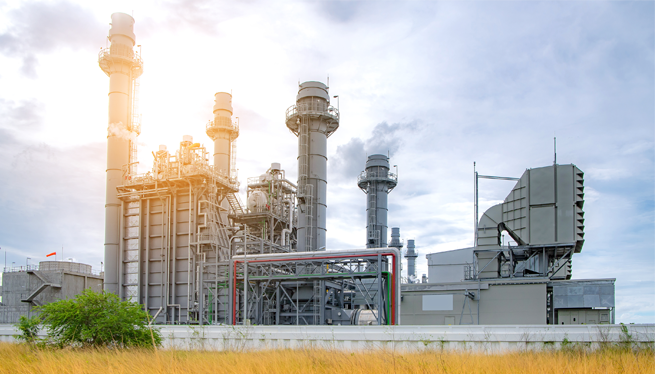ENGIE Laborelec’s research into exhaust gas recirculation, to optimize post-combustion capture on GTs, provides valuable insights for next-generation flexible CCGTs plants.
November 2023

CCGT plants will still have a role to play in the net-zero power production market of the future, be it as flexible units that can be put in operation to balance the grid when renewable power production is too low. In a net-zero emission context, post-combustion carbon capture (PCC) is going to be the norm for these units, involving the chemical absorption and subsequent desorption process to isolate the CO2 from the exhaust gases.
Exhaust gas recirculation improves the carbon capture conditions
A major problem with current Amine based capture technology, is the size of the absorption unit, which is huge because of the low CO2 concentration in the exhaust gas. ENGIE Laborelec is therefore studying the possibility of implementing exhaust gas recirculation (EGR) to increase the CO2 concentration in the flue gases. The study carried out in 2022 revealed that a 35% EGR rate will significantly increase the CO2 concentration in the exhaust gas, improving the carbon capture conditions and thus allowing for a much smaller PCC absorber. A smaller unit also gives better prospects for future flexible plant operation. In addition, the study showed that by adding the EGR process, power production efficiency improves a little.
Built on solid scientific foundations
How does it work? ENGIE business developers enter one dimension of the system (sizing of the renewable energy installation or the electrolyser or the CO2 conversion unit) as well as key parameters such as anticipated product prices and the cost of commodities. A Laborelec expert then feeds the data into the CCU tool, which will model and size the rest of the process chain under technical, regulatory, and economic constraints to maximise project returns.
Expert Jim Gripekoven points out that the tool has been built on solid scientific foundations: “The modelling is done in a state-of-the-art process modelling tool with a thermodynamic basis described in the literature. And it’s been validated through testing.”
The tool also anticipates upcoming EU regulations on renewable fuels of non-biological origin (RFNBO) with a view to meeting the 2030 targets.
Optimizing the EGR design
The study continues to further optimize the EGR design and evaluate whether higher EGR rates are feasible and viable. Creating more operational flexibility, lower carbon capture costs and refined operational controls, for improved plant efficiency, is the aim of the ongoing research.